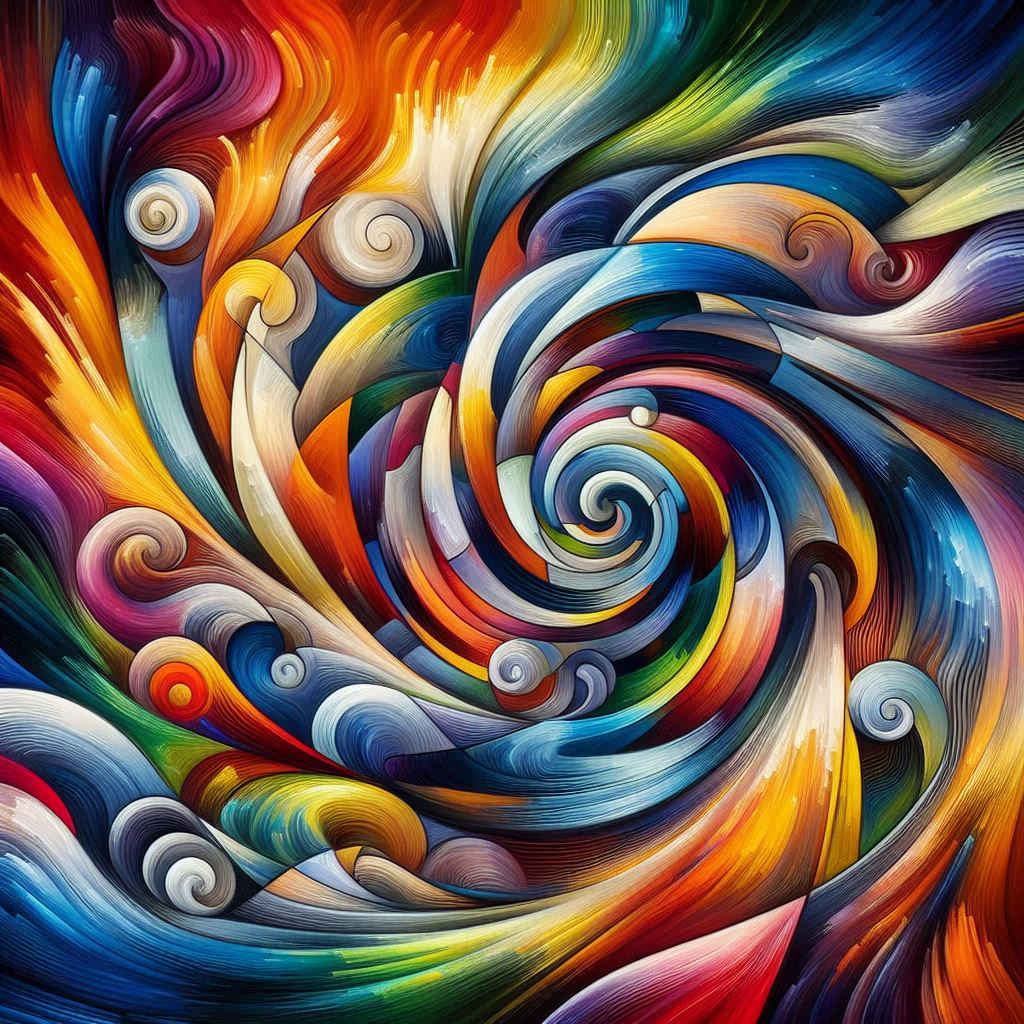Abstract art is a fascinating realm where the ordinary rules of representation fly out the window. We’re talking lines, shapes, and textures taking the spotlight to stir emotions and thoughts, rather than just depicting stuff as it appears in real life. When you dive into this world, every swirl of paint or rough texture has something to say, even if it isn’t shouting, “Hey, I’m a tree!”
Abstract art didn’t just pop into existence one day. It has a rich, rebellious history rooted in a collective desire to shake off the shackles of traditional art. Artists like Kandinsky and Mondrian felt this deep urge to express the intangible emotions and thoughts that a simple landscape couldn’t capture. They started breaking down common scenes into shapes and hues, sparking a revolution that said, “Hey, art is more than what’s hanging out in front of your eyes!”
Understanding abstract art is about understanding this very idea. It’s not about seeing a direct representation but feeling the energy behind it. Imagine looking at a piece and seeing bold lines pushing against each other, textured surfaces catching the light in unusual ways—that’s how abstract artists challenge how we view and think about art. They make us question what we’re seeing and how it affects us.
Shaping Emotions: The Role of Lines, Patterns, and Textures
Lines in abstract art are much more than simple strokes—they’re dynamic forces pulling you through the artwork. Whether they’re sharp and angular or soft and flowing, the lines guide our eyes and suggest movement, almost like leading a dance. This movement brings everything to life, making you feel the energy and tension etched into the canvas.
Patterns come into play by adding rhythm and structure to a piece. When an artist repeats a shape or color, it creates a kind of expected visual beat, something that your brain loves to pick up on. And when these patterns shift or break, it introduces a surprise element that keeps you on your toes, inviting a second look.
Textures add a third dimension, letting the eyes and mind “touch” the painting. Is it smooth and serene, or rough and chaotic? This tactile illusion can instantly shift how you emotionally connect with the artwork. What’s wild is how your perception can change by just looking at the textures, altering mood and meaning in seconds.
Artworks by legends like Jackson Pollock are perfect case studies. Pollock mastered the play of movement through chaotic lines and contrasting textures, creating pieces that feel alive and full of frenzy. And then there’s Mark Rothko, who used broad fields of color with subtle textural variations to evoke emotional depth and contemplation.
Each artist has their unique signature when it comes to using these elements, but what’s key here is how they all understand the audience’s emotional journey. They’re intentional in creating reactions, whether it’s joy from a burst of line patterns or introspection from soft, textured layers.
Beyond the Visual: Sensory and Emotional Depth in Abstract Art
Abstract art stretches beyond what your eyes see, using elements that tap right into your senses and emotions. Imagine viewing a robust texture; it does more than add a visual layer—it can evoke a feeling of roughness or warmth, making the experience much richer. Our brains don’t just stop at seeing; they translate these visual cues into tactile and emotional sensations.
Different textures and patterns often trigger various emotional responses. For instance, a chaotic splash of dark textures might evoke anxiety or unrest, while smooth, flowing patterns can induce calm and serenity. These elements can even mimic reality’s sensory experiences, like how soft, curved lines might remind you of rippling water or a gentle breeze—things that comfort and soothe.
The multisensory perception theory explains why art impacts us so deeply. When you look at art, your brain doesn’t just process visual information but links it to sounds, smells, and touch. It’s like when a vibrant painting with bold, jagged lines makes you almost hear a loud noise or feel a quick rush of adrenaline. It makes witnessing abstract art a whole-body experience.
There are scientific studies that dig deep into this phenomenon of sensory-emotional responses—to both lines and textures—and they back up what many art lovers seem to know intuitively. Certain abstract artworks have measurable effects on the brain’s emotional centers, kind of like how some music can change your mood in a heartbeat. Recognizing how these visual elements get translated into whole-body experiences shows why abstract art holds such power.
Considering all this, next time you find yourself in front of an abstract artwork, don’t just passively look. Engage with it—feel the rhythm, and the textures, and let it speak to your senses and emotions. That’s where the true magic of abstract art unfolds, offering more than just visual stimulation, but an immersive emotional journey.

